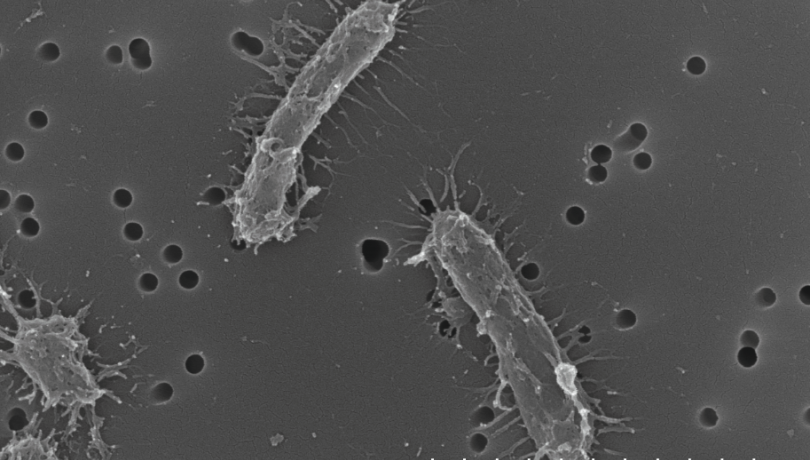The new species were identified in the Blanes Bay (Girona), where there is a permanent ICM-CSIC sampling point, and are globally distributed.

Researchers from the Institut de Ciències del Mar (ICM-CSIC), the Universitat de València and the Universitat Autònoma de Barcelona have identified and characterised 26 new strains of marine bacteria. These bacteria in all oceans could play important roles in the global ocean’s biogeochemical cycles. The details of this finding were recently published in the prestigious journal Frontiers in Microbiology.
To carry out the study, the scientific team analysed samples from the Blanes Bay (Girona), a permanent ICM-CSIC sampling point, collected during all seasons of the year, which allowed them to analyse how the microbial community varies throughout the year. Specifically, they examined the morphology and physiology of the isolated bacteria, and sequenced their genomes to characterise their function and classify them taxonomically.
The analyses revealed the existence of 23 new bacterial species and six new genera distributed in the following classes: Alphaproteobacteria, Gammaproteobacteria, Bacteroidia and Rhodothermia. According to genomic studies, these bacteria may play crucial roles in the ocean's carbon, nitrogen, sulphur, phosphorus and hydrogen cycles, participating in processes such as carbon fixation, denitrification or oxidation of sulphur compounds.
These processes are key to maintaining the overall health of marine ecosystems. For example, denitrification is essential for the ocean's stability, while the oxidation of sulphur compounds contributes to the degradation of toxic compounds such as sulphuric acid and the production of organic matter in dark environments such as the deep ocean.
Global distribution
The research also revealed that these groups of bacteria are widely distributed in all seas and oceans, with those belonging to the Flavobacteriaceae family being the most abundant and widespread. This finding was made possible thanks to access to the metagenomes from the Tara Oceans expedition, which provide sequence information on all the genomes present in a sample and allow comparison of the genome sequences of the new bacteria to calculate their abundance in each sample analysed.
"Mass sequencing helps us to understand bacterial communities as a whole, but without cultures, new taxa (species, genera, etc.) cannot be experimentally characterised and published validly. This is one of the reasons why isolating and culturing remains essential, and its combination with sequencing technologies and bioinformatics analysis is extremely powerful,’ explains Xavier Rey Velasco (ICM-CSIC), first author of the paper.
"Even though the Bay of Blanes is possibly the most studied coastal marine ecosystem in the world from a microbiological point of view, we still discover new species and new aspects of its ecology every time we stop to look in detail. If we know so little about the best-known place, what we still have to know about the rest of the marine ecosystems is enormous", stresses Josep M. Gasol (ICM-CSIC), one of the study directors.
Most of the new bacteria have been assigned names about their place of isolation (such as blandensis, from the Latin name for the city of Blanes), the time or the characteristics of the culture (shape and colour). However, five of them were named after prominent microbiologists: Zoe Rosinach Pedrol, Ruth Patrick, Katrina Edwards, Isabel Esteve and Pepita Castellví, who was director of the ICM-CSIC and the first woman to direct a scientific base in Antarctica. This gesture is particularly significant, as currently 84.4% of the names of bacteria that honour individuals are male.
All in all, the work opens up new avenues for research into the functioning of marine bacterial communities and their influence on the global environment, underlining the importance of these organisms in the balance of oceanic ecosystems.